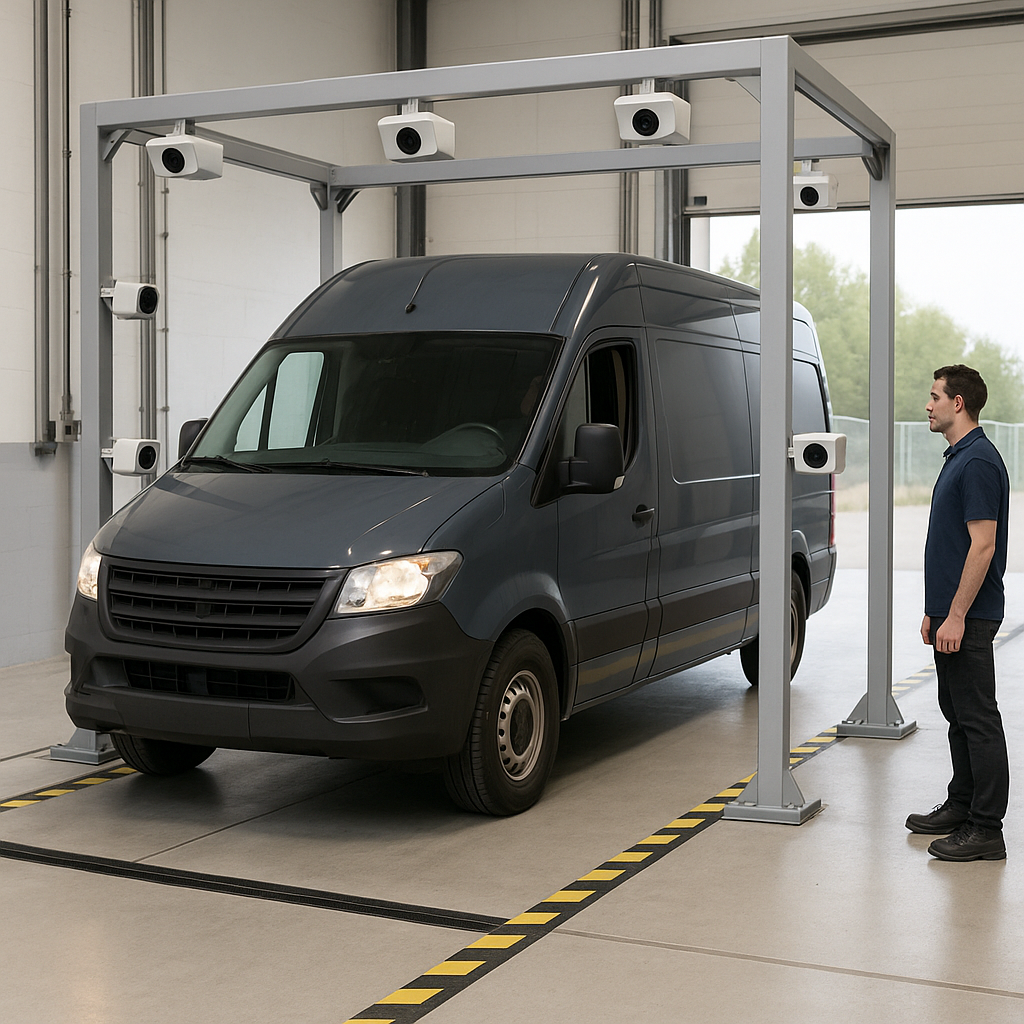Automated Vehicle Inspection Systems (AVIS) are transforming how large fleets manage daily safety and maintenance checks. These systems equipped with high-resolution cameras, AI-powered fault detection, and advanced sensors - can provide accurate, fast, and standardized inspections.
But to unlock the full potential of AVIS, implementation alone is not enough. Like any technology, effectiveness depends not just on hardware - but on how it’s used.
The Hidden Risk: Untrained Drivers and Expensive Infrastructure
While AVIS is designed to reduce human dependency, it still relies on human behavior to function properly. In many last-mile delivery operations, drivers may lack technical knowledge, awareness of inspection procedures, or a sense of caution around sensitive systems.
Key Concerns:
- Physical damage risk: Drivers may misalign vehicles while entering the inspection lane, damaging sensors, poles, or cameras.
- Neglected maintenance: Without a clear owner of the system, regular cleaning and upkeep of lenses or platforms may be missed.
- Disruptions in workflow: If AVIS equipment is damaged, it may require hours or even days to repair, delaying inspections and creating operational bottlenecks.
The Solution: Assign Expert Staff at the Inspection Hub
To operate AVIS safely and efficiently, it is recommended that trained personnel are stationed at the inspection zone, responsible for:
Specialist Roles:
- Vehicle positioning: Taking over the wheel and guiding vans smoothly through the inspection frame
- System caretaking: Cleaning cameras, calibrating sensors, and ensuring alignment
- Damage prevention: Monitoring for rough handling or incorrect entries
- Workflow efficiency: Managing vehicle queues and minimizing downtime
- Report validation: Verifying flagged issues and ensuring data integrity
Routine Maintenance = Long-Term ROI
AVIS equipment represents a significant investment. Like any precision system, it requires routine cleaning, diagnostics, and protective practices to remain effective:
- 📷 Camera lens cleaning (daily or as needed)
- 🧽 Debris removal from scanning lanes
- 🛠️ Regular calibration and firmware checks
- 🔄 System restart protocols for error recovery
Without this attention, the system can degrade—delivering unreliable data and undermining its intended benefits.
💡 Additional Best Practices for AVIS Optimization
- 🧭 Clear signage and floor markings to guide van alignment
- 🎥 CCTV coverage to monitor entry/exit behavior around AVIS
- 📚 Training modules for new drivers on AVIS awareness (even if they don’t operate it directly)
- 📊 Dashboard alerts for maintenance scheduling and inspection anomalies
- 🧾 Daily checklists for AVIS support staff to follow
Final Thoughts
Automated Vehicle Inspection Systems are an incredible advancement—but they are not immune to human error or neglect. The best results come not just from advanced technology, but from thoughtful implementation, ongoing care, and dedicated expert staff.
By placing responsibility in the hands of trained personnel at the inspection hub, logistics operations can:
- Ensure equipment longevity
- Maintain accurate fault detection
- Prevent costly downtime
- Achieve the true ROI of AVIS systems
